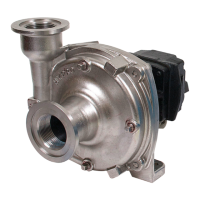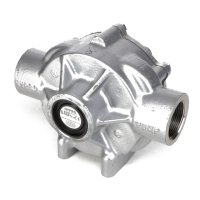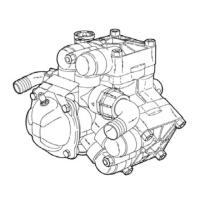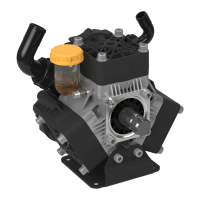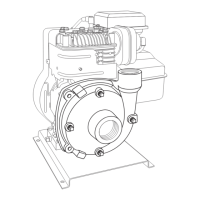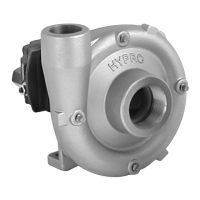6
L-1599 (04-01-22)
OPERATIONS & MAINTENANCE
ENGINE SAFETY PRECAUTIONS
Fire and explosion hazard. Gasoline can explode.
Store gasoline away from the engine. Add gasoline to the engine
only when the engine is off.
Burn hazard. Hot surface. The engine gets very
hot during operation. Do not touch the engine surfaces. Keep
children away. Allow the engine to cool before moving it indoors.
Deadly fumes. Carbon monoxide. Never run the
engine in an enclosed space. Only use outdoors with plenty of
ventilation.
PREPARATIONS BEFORE STARTING THE ENGINE
1. NOTE: Engines come from factory without oil. Please fill
with oil prior to starting!
Use oil recommended for ambient air temperatures
that the engine will be running at. See chart below.
Change oil after the first 20 hours and every 100 hours
thereafter.
Fill with oil by removing the fill cap / dipstick. Add oil
until the level reaches the bottom of the opening. Check
the oil level by pushing the cleaned dipstick into the oil-
fill opening. DO NOT SCREW IT IN. Remove the dipstick
and inspect it. Add oil if needed. Reinstall the cap /
dipstick.
The engine has a low-oil monitoring system. If the oil
level drops too low, the system will automatically turn
off the engine.
2. Check fuel level in tank, and do not over fill. Use fresh,
clean automotive fuel. This should be unleaded fuel that
has an octane rating of 86 or higher. DO NOT FILL FUEL
TANK WHEN ENGINE IS RUNNING.
3. Priming Water: IMPORTANT: PUMP MUST NOT BE RUN
DRY. On self-priming pumps, only the chamber needs to
be filled with liquid. The pump must not run unless the
priming chamber is completely filled with liquid as the
mechanical seal depends on the liquid for its lubrication.
Self-priming models can be primed by removing the filler
cap located at the top of the pump where the discharge
line is mounted to the pump, and filling the priming
chamber with liquid. After use, the priming chamber
should be flushed and drained to avoid chemical corrosion
and damage from freezing. Drain by removing the lower
drain plug located at the bottom of the casing.
STARTING THE PUMP
Before starting engine, be sure the priming chamber is filled
with liquid and the discharge hose is secure (Figure 1).
1. Turn engine switch located by recoil starter to ON
position.
2. Turn the fuel valve to ON (Figure 2).
3. Push the throttle lever to a slightly open position.
4. Operation of choke lever.
When engine is cold:
ǁ
In cold weather, start engine with choke in fully
closed position.
ǁ
In warm weather, start engine with choke in half
closed position.
When engine is warm: Start engine with choke in
fully open position.
5. Start engine by pulling recoil starter out quickly and
forcefully. Repeat pulling until the engine starts.
OPERATION OF THE PUMP
1. Idle the engine for 3 to 5 minutes to warm it up.
2. Open the throttle lever to the upper zone after engine
has warmed up.
3. Once the pump has primed, you will note a load on the
engine; adjust rpms to proper speed for your pumping
application.
Figure 1

